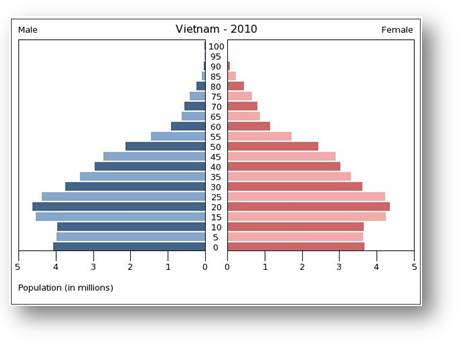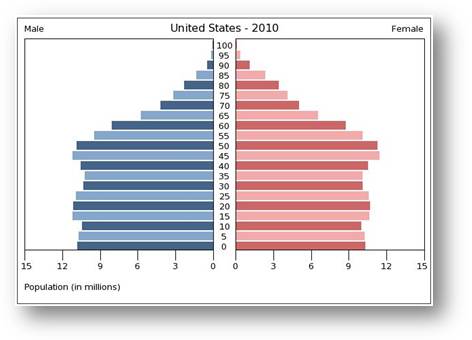Demographic trends
Population
 A key stakeholder is the local population, but increasingly businesses need to think on a larger, even global scale. They need to look carefully at population changes in the various countries in which they operate as this population acts as both customers and a potential workforce.
A key stakeholder is the local population, but increasingly businesses need to think on a larger, even global scale. They need to look carefully at population changes in the various countries in which they operate as this population acts as both customers and a potential workforce.
Global Population
The world's population is estimated to hit 7 billion by 2013 and 9 billion just before 2050. Excellent population data can be found on the US Census Bureau site. This site also has a summary page for links to general population data information including the world population clock (reload the page after one minute to see the change).
The population changes in India and China are particularly significant, not just to those countries. Together, China and India have over 2.5 billion people, representing more than one third of the world's population. Not only are their populations growing faster than most western countries, but economic growth is far greater as well. The economic demands of the two populations will increase rapidly over the next decade, as well as their consumption of scarce resources such as oil and water. This will influence prices of commodities and the finished goods that use these
Populations are often presented in terms of a pyramid, identifying the structure of a population. The US Census Site also allows you to compare population pyramids at a national level. This can provide valuable background knowledge to support analysis of government and industry behaviours. Many western countries have ageing populations. We will discuss the consequences of this later. Asian countries tend to have younger age profiles:


China has a huge, but relatively young population. However, as the population grows and birth rates fall the structure of its population will change. An excellent graphic of these changes over a one hundred year period can be found here. As populations age, their demand patterns change, which impacts on the goods and services produced by firms.
As economies develop, their populations tend to age and then possibly decline as longer life expectancy is offset by falling birth rates. Any growth in the population of developed countries is likely to come from immigration.

Let's think about how population changes might affect business. Have a think about how these population changes might affect business and jot down some notes. Then follow the link below to compare your notes with ours.
What might be the effect on business of changes in population?
Why not use the window below to find equivalent population data for the country where you are and analyse the impact that population changes will have on business in the country?
